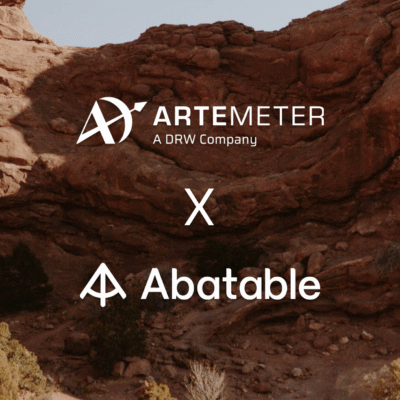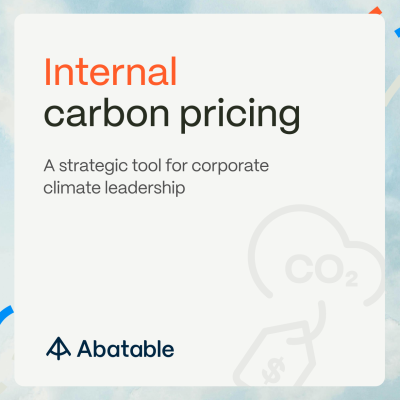In many cases, preventing damage is preferred over repairing it. For carbon credits, this role is fulfilled by carbon avoidance – preventing emissions from entering the atmosphere in the first place. Yet, as corporations and governments adopt net-zero goals, there has been an increased policy focus on carbon removals over avoidance. In this article, we will discuss carbon avoidance – its definition, examples, problems, and relevance during rising tides of carbon removal.
Carbon Avoidance Definition
Carbon avoidance projects support climate action by avoiding or reducing emissions released into the atmosphere. An example includes protecting forests that might otherwise be under threat of being cleared. Avoidance credits currently monopolise the voluntary carbon market, contributing to approximately 93% of all available offsets. There is still a debate surrounding the definition of avoidance. As of today, article 6 does not officially define the term. However, following a meeting in preparation for COP27 this year, a definition is expected to be developed in the next couple of months.
Avoidance projects are noticeably different from carbon removal projects, which focus on removing carbon directly from the atmosphere and can be nature-based (e.g., tree planting or reforestation) or technology-based (e.g., direct air capture).
Carbon Avoidance Examples
The easiest way to differentiate between carbon avoidance projects is to consider the pathways that create their offsets. Some examples include:
Point-source capture and utilisation
This pathway involves technologies that capture carbon dioxide from industrial processes, such as steel and cement manufacture, or the combustion of fossil fuels. This capture is highly efficient as more than 80% of carbon dioxide emissions can be captured. Once captured, this CO2 can be utilised in the production of valuable products – for example, carbon-neutral synthetic fuels that displace the use of fossil fuels.
Protecting existing carbon stocks
Activities that involve protecting existing carbon stocks from being harvested or drilled, and releasing the carbon dioxide stored in them, can be financially incentivised using carbon credits. For example, preventing extraction of oil, avoiding deforestation and forest degradation (REDD), and improved forest management (IFM).
Implementing a change to traditional practices
This pathway does not involve any storage of carbon. Instead, these projects focus on reducing an activity that causes significant emissions. Examples include renewable energy and improved cookstoves.
Carbon Avoidance Problems
Even though carbon avoidance projects are an effective way of reducing the carbon footprint of different activities, several challenges remain:
Additionality
While emission removal projects, such as direct air capture with geological storage, have a strong case for additionality. Emission avoidance projects tend to have relatively weaker additionality claims. For example, renewable energy credits, representing the largest supply pool, have seen their cost of development decrease – predominantly due to learning curves, where price decreases with scale. Coupling this with rising energy prices from fossil fuels, renewable energy is now more economical than conventional energy sources in some countries and regions making the carbon credits less or even non-additional.
Quantifiability
Measurability, or the ability to calculate the emission reductions from a project, is another concern. Quantifying avoidance relies on comparing project emissions with counterfactuals. These tend to be left to the developer to assess and are not subject to scrutiny, creating incentives to exaggerate baselines to receive more credits. Also, third-party reviewers of carbon avoidance projects only check if a project follows the rules outlined in a methodology, not if the assumptions of a counterfactual baseline are credible. For example, aggressive deforestation assumptions for a project may adhere to the rules, but may not be plausible, which can cause significant over-crediting.
Leakage
Emissions avoided from some projects can be transferred from one location to another. For instance, a project that conserves forestry in one region could inadvertently lead to increased deforestation elsewhere. Occasionally, protocols overlook this factor when issuing credits, resulting in over-crediting.
Value of Carbon Avoidance
The IPCC acknowledges that before 2030, avoiding an “overshoot and reliance on future large-scale … carbon dioxide removal (CDR)” requires focusing on avoidance ahead of removals. However, after 2050, carbon removals are needed to guarantee net-zero emissions. It is unlikely that by then we will have the technology necessary to do so purely through avoidance pathways. Therefore, we must ensure that we effectively scale and invest in carbon removal but must not disregard the importance of avoiding emissions in the first place. In the short term, it is abundantly evident we must harness carbon avoidance to help achieve our global climate targets.
The following diagram illustrates the relevance of avoidance pathways among available mitigation options.
Source: IPCC Mitigation of Climate Change (Summary for Policy Makers)
We have also identified several additional valuable attributes of carbon avoidance projects:
Cost
Generally speaking, carbon avoidance offsets are far cheaper than carbon removal offsets because actions that focus on avoidance tend to translate into lower development costs. For example, hiring supervision to protect a forest or deploying more efficient cookstoves is more economical than acquiring land for reforestation. This price disparity means funding carbon avoidance initiatives may have a more significant effect (in terms of tons) on a given investment.
Scale
The magnitude of removals required to ensure alignment with the Paris Agreement Goals is highly unlikely to materialise at a rate where we can disregard the importance of carbon avoidance. Carbon avoidance projects have vast scale and can help prevent an overdependence on removal solutions as well as help removal solutions target areas where they will have a bigger impact – areas where it is not possible to decarbonise or avoid emissions in the first place.
Co-benefits
Supporting carbon avoidance projects can provide climatic benefits beyond just carbon. For example, projects focusing on protecting existing forest stocks can provide significant co-benefits (e.g., protecting existing ecosystems, increasing biodiversity, providing economic opportunities for local communities, and improving resilience).
Conclusion
In summary, carbon avoidance projects have vast potential for supporting offsetting ambitions and can provide additional co-benefits alongside their implementation. To make sure they achieve this, carbon avoidance credits should undergo careful analysis to ensure they are of high quality and deliver carbon benefits based on credible quantification.














































































































